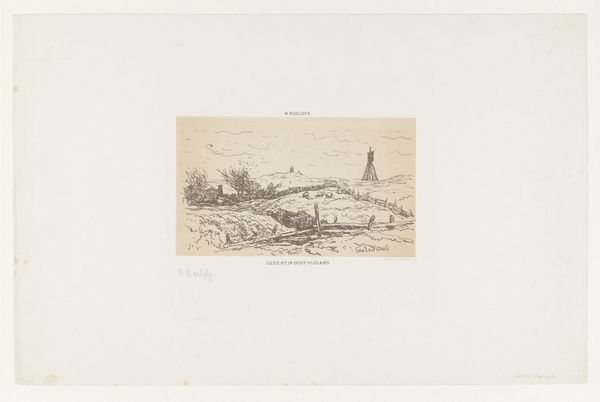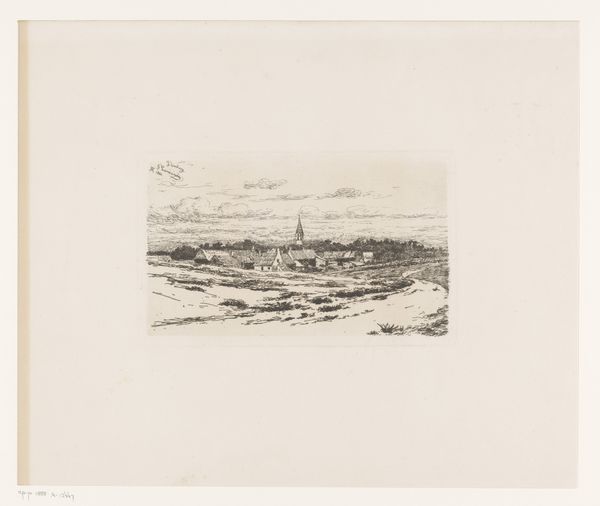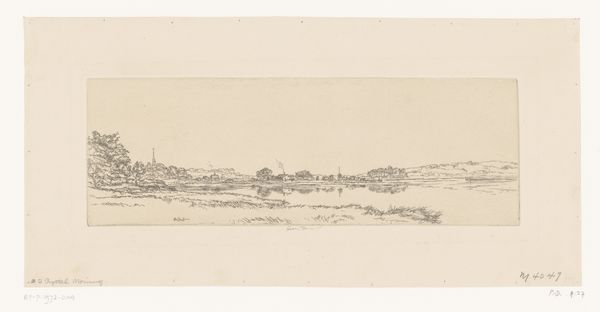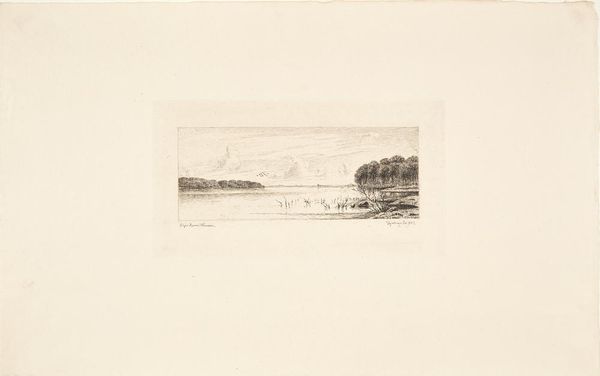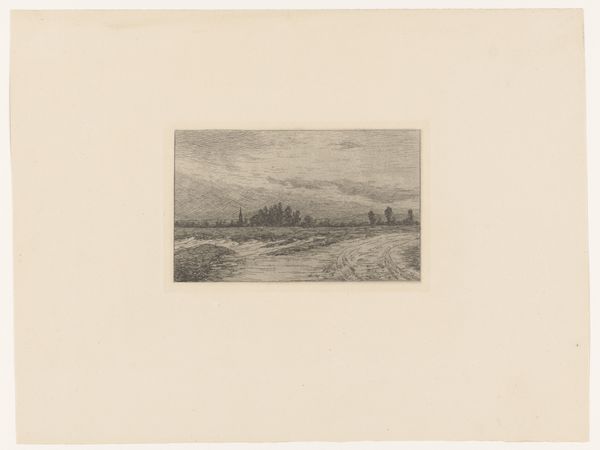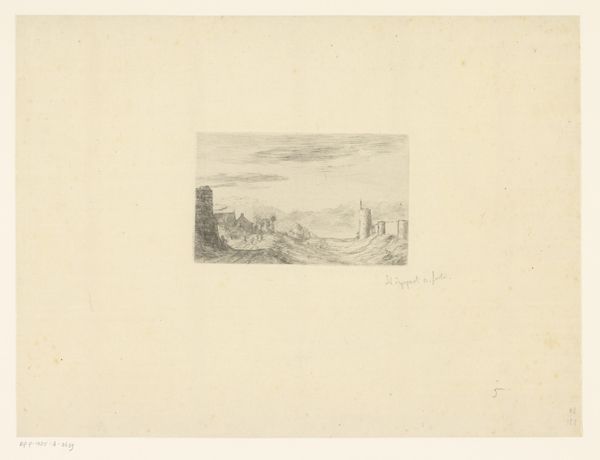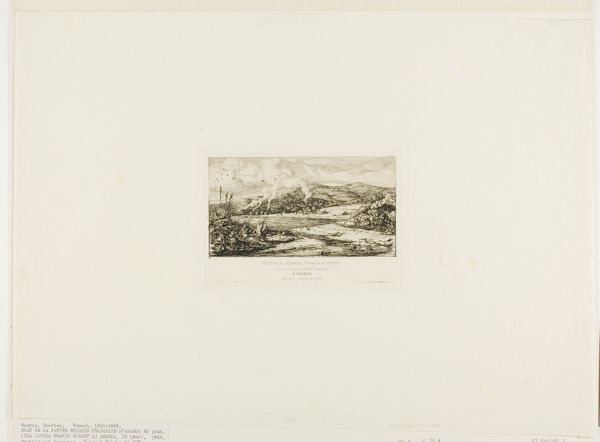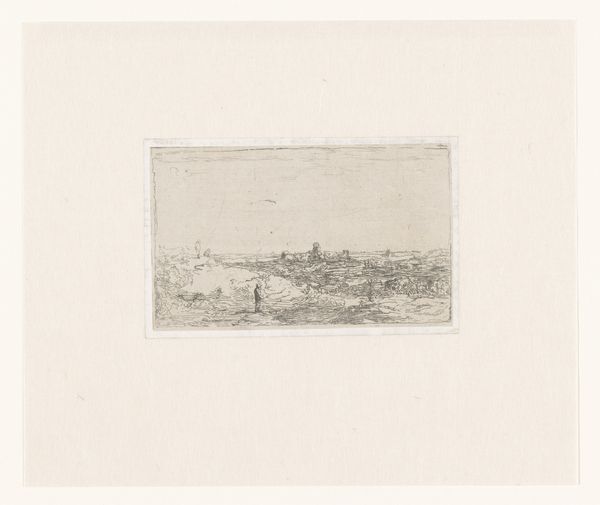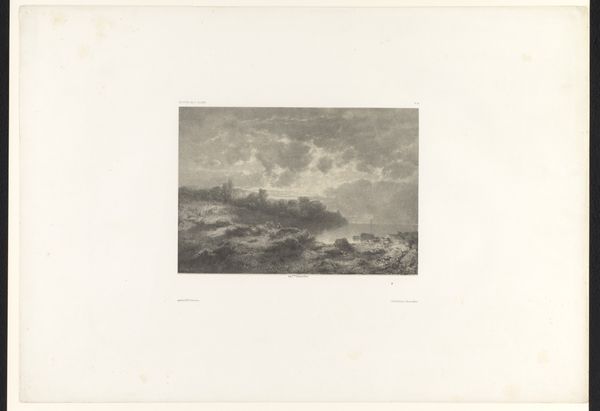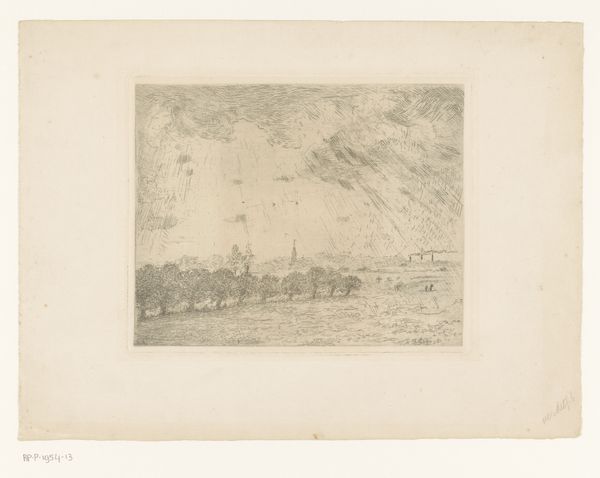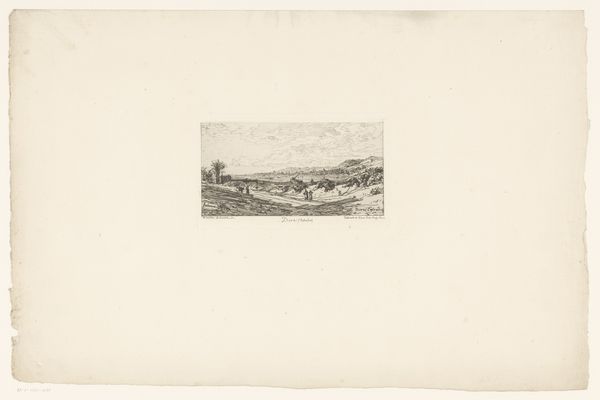
print, etching, paper
# print
#
etching
#
landscape
#
paper
#
monochrome
Dimensions: height 348 mm, width 535 mm
Copyright: Rijks Museum: Open Domain
Curator: Welcome. Here we have Willem Roelofs' "Gezicht op het dorp West-Terschelling," created before 1897. It is currently held in the collection of the Rijksmuseum. Editor: What strikes me immediately is the starkness of the etching, its minimalist feel conveying a sort of desolate atmosphere. The vast expanse of the dunes juxtaposed with the small, distant town makes me feel… small. Curator: The landscape itself is the core of the composition, isn't it? Observe how Roelofs employs line and form to generate a feeling of depth. The foreground, a tangle of dune grasses meticulously rendered, gives way to the planar rendering of the village and horizon. Editor: Indeed. And let’s not forget the materiality itself—an etching on paper. Consider the laborious process of etching, where the artist meticulously carves into a metal plate. It's a painstaking craft reflecting the labor-intensive lives of the islanders, whose existence was entwined with this unforgiving land and harsh elements. Curator: You've struck on an important point. Roelofs’ method embodies a representational structure and an artistic intent. How are we to understand the etching beyond its subject? Could we suggest that the labor reflected in its production mirrors and consequently critiques, the labor evident in landscape itself? Editor: Exactly! The lines carved in the plate become analogous to the lived experience within this view. Furthermore, how does its availability impact viewers' experiences? Was it only meant for private viewing by a select few, or circulated widely? The economics of its production and consumption would tell a richer story of the cultural dynamics in Holland during the late 19th century. Curator: A point well taken. It complicates and enriches our reading of the piece itself to contemplate the socioeconomic influences that would impact artistic creation, interpretation, distribution and so forth. Editor: Understanding the artistic method as well as how that artistic creation is circulated through production helps unlock a world of different possibilities about Roelofs' landscape print. Curator: Thank you for giving us insight today; what a complex relationship that binds place, the process, and the labor present here.
Comments
No comments
Be the first to comment and join the conversation on the ultimate creative platform.
